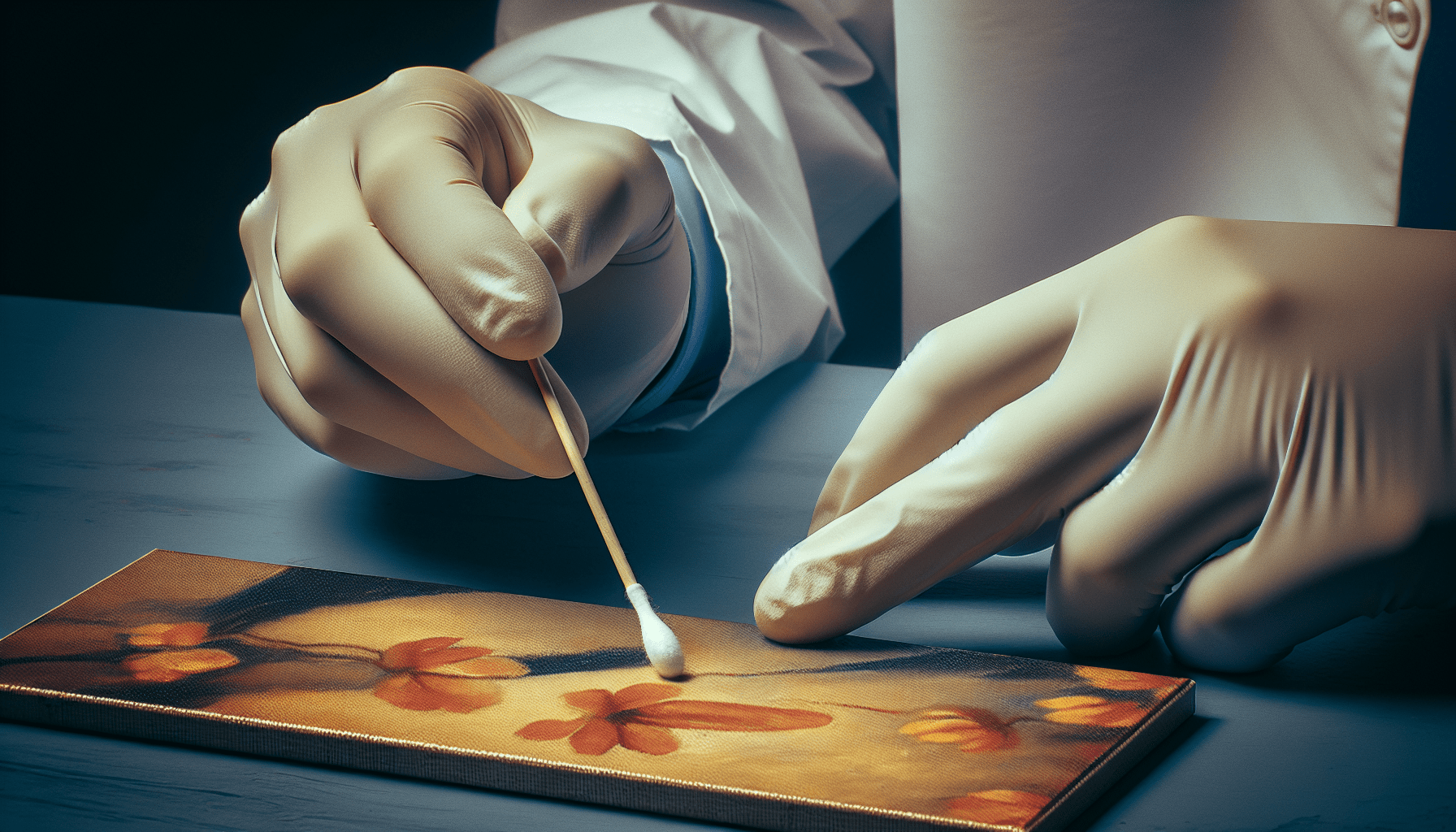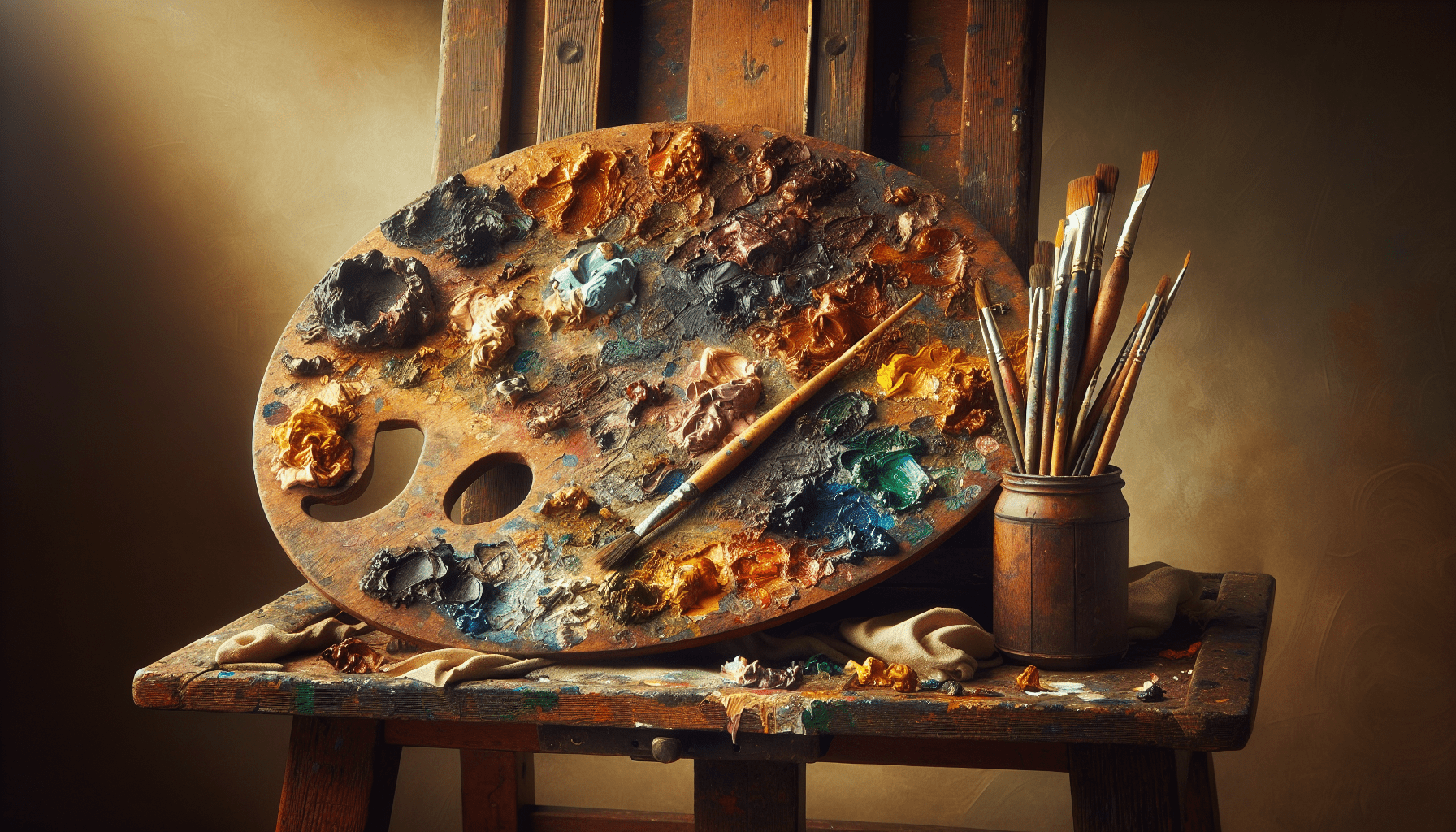In the realm of art and painting, there often arises a critical question: Can you gesso over oil paint? This article seeks to provide an illuminating response by exploring the dynamics and technicalities involved in this matter. You will not only gain a vibrant understanding of the topic, but also get the chance to enhance your artistic skills. Prepare to shed light on this subject as you read through the ensuing text, encountering new insights and knowledge in the process.

Exploring Gesso as a Medium
In the realm of painting, you may have often heard the term ‘Gesso’ floating around. But, what is Gesso exactly?
What is Gesso?
Gesso, quintessentially, is a white paint mixture used in the preparation stages of painting. It consists of a binder mixed with chalk, gypsum, white pigment, or a combination of these materials.
The Purpose of Gesso
Gesso serves several purposes in painting. Primarily, it prepares (or “primes”) the surface for painting, making the surface more absorbent. Gesso can be used on several surfaces, such as canvas, wood, or paper. Its versatility and strength in providing a stable base make it a popular choice among artists.
Gesso vs. Primer
A crucial thing to understand is the difference between Gesso and primer. While both are used to prime the surface, they have fundamentally different properties. A primer is typically acrylic-based and prepares a surface for the application of paint. Gesso, on the other hand, besides preparing a surface, also provides texture and tooth for the paint to adhere to.
Understanding Oil Paint Characteristics
Before proceeding further, a comprehensive understanding of oil paint characteristics is indispensable.
Drying Time
Oil paint, noted for its slow drying time, allows artists to continue working on pieces for extended periods, manipulating the paint to achieve different effects.
Texture and Flexibility
One of the significant traits of oil paint is its rich, glossy texture and flexibility. It allows for textured strokes and resists cracking upon drying.
Surface Absorption
A noteworthy characteristic of oil paint is its minimal absorption property. It sits as a separate layer on the painting surface, without being absorbed into it.
Applying Gesso Over Oil Paint
An intriguing technique prevalent among artists involves applying Gesso over oil paint. But why is it so?
Why Apply Gesso Over Oil Paint?
Applying Gesso over oil paint provides an opportunity to create fresh work over an existing piece. It can also provide a solution to cover mistakes or initiate a new project on an otherwise rejected painting.
Preparing the Surface
Before the application of Gesso, ensuring the oil paint is thoroughly dry and the surface is adequately prepared is crucial. Any dust or grime is to be cleaned off, and sanding may be required in some cases.
Types of Gesso
There’s a variety of Gesso available, including clear, white, and tinted versions. The choice of Gesso solely depends on your artistic need and preference.
Applying Gesso Layers
Applying several thin layers of Gesso is generally regarded as good practice. It creates a more robust and even surface, ready to be reworked with fresh paint.
Sandpapering the Surface
After the application of Gesso, a light sandpapering can give a smoother finish, providing the perfect surface for the new painting.
Potential Challenges and Risks
While Gesso on oil paint has its advantages, it’s essential to be aware of potential challenges and risks that might surface.
Adhesion Issues
The most significant concern with Gesso over oil is adhesion. Oil repels water-based products, which includes Gesso. This can potentially result in the Gesso layer peeling off.
Cracking or Flaking
Improper application or rushed drying could lead to cracks or flakes on the Gesso surface.
Changing the Aesthetic
Gesso can change the texture and absorbency of the surface, which can affect the aesthetics of your painting.
Sanding Difficulties
It’s a challenge to achieve a smooth surface through sanding, as any residual oil paint might interfere with the process.
Compatibility Considerations
Not all types of Gesso work well with oil paint. It’s essential to ensure the products you are using are compatible.

Benefits and Advantages of Gesso Over Oil Paint
Despite certain risks, there are several benefits and advantages of applying Gesso over oil paint.
Sealing the Oil Paint
A stable, thick layer of Gesso can effectively seal the oil paint, preparing the surface for fresh work.
Creating a Fresh Surface
As mentioned earlier, Gesso can provide a whole new canvas on an existing oil painting, which can be particularly useful when starting new projects or correcting old ones.
Covering Mistakes
Gesso can be the most effective weapon to cover up your mistakes on an oil painting, thereby allowing you to start afresh.
Versatility of Gesso
The modularity and adaptability of Gesso to conform to artistic needs give it an edge above the other mediums, making it a preferred choice among artists.
Considerations Before Applying Gesso Over Oil Paint
Before you take the step of applying Gesso over oil paint, several factors need your consideration.
Intention and Artistic Vision
It’s essential to have a clear understanding of your intention and artistic vision. Do you want to cover the old painting entirely or just portions of it?
Quality of the Underlying Oil Paint
Consider the quality and condition of the underlying oil paint. If certain sections are already peeling or flaking, it’s better to remove them before applying Gesso.
Surface Preparation
Taking care to prepare the surface thoroughly before the actual Gesso application can lead to better results.
Surface Texture
Since Gesso will significantly change the surface texture, consider if this change aligns with the vision for your next painting.
Step-by-Step Process of Gessoing Over Oil Paint
Following a systematic procedure can rightly assist you in the application of Gesso over oil paint.
Gather Materials
Firstly, gather all the necessary materials, including Gesso, a mixing palette, brushes, a rag, and sandpaper.
Clean the Painting
Use a rag to wipe off any dust or grime from the painting.
Lightly Sand the Surface
For better adhesion, lightly sand the surface before the application of Gesso.
Apply the First Layer of Gesso
Using a brush, apply the first thin layer of Gesso evenly over the painting.
Additional Gesso Layers
After the first layer has dried, add more layers as needed, ensuring each previous layer is fully dry before proceeding.
Sand and Smooth the Surface
After the final layer of Gesso is dry, lightly sand the surface to give it a smooth, finished look.
Evaluate the Finished Result
Finally, evaluate the finished result. The surface should be smooth, absorbent, and ready for new paint.
Alternatives to Gesso Over Oil Paint
There are alternatives if you’re not comfortable with the idea of Gesso over oil paint.
Applying Acrylic Mediums
Acrylic mediums can be an effective alternative that offers similar benefits like Gesso but with different application methods and results.
Using Aqueous Barrier Layers
Auctorque the composition of your painting, aqueous barrier layers can be an alternative worth exploring instead of Gesso.
Considering Panel Priming
Panel priming, though a more involved process, could prove to be an effective alternative to Gesso, especially for large paintings.
Tips and Best Practices
Certain tips and best practices could enhance your experience with Gesso over oil paint.
Test on a Small Area First
Always advisable to test on a small section of the painting to check compatibility and adhesion.
Use High-Quality Gesso
Invest in high-quality Gesso. The results will be aesthetically superior and more durable.
Apply Thin Layers
Patience is key. Prohibit the urge to slather large amounts hurriedly. Instead, several thin layers provide a better finish.
Sanding Gentle and Even
Sanding should be gentle and even. Harsh sanding can scrape off the Gesso and ruin the texture.
Allow Sufficient Drying Time
Do not rush the drying process. Each layer of Gesso needs to dry completely before the next layer is applied.
Conclusion
Gesso as an Option
Gessoing over oil paint is indeed an option to consider. It opens a world of possibilities – from covering mistakes to providing an entirely new canvas for fresh work.
Experimentation and Personal Preference
While there are specific guidelines and suggestions, ultimately artwork is personal and subjective. Your experimentation and personal preference should dominate the choices you make.
Painting is an art which is not confined to rules, offering unlimited possibilities and destinations. All techniques, including this one of Gesso over oil paint, are tools that you can use in your artistic journey to create masterpieces. There are always risks and challenges, but in the grand scheme of the artistic process, they’re simply stepping stones on your path to progression and growth.



